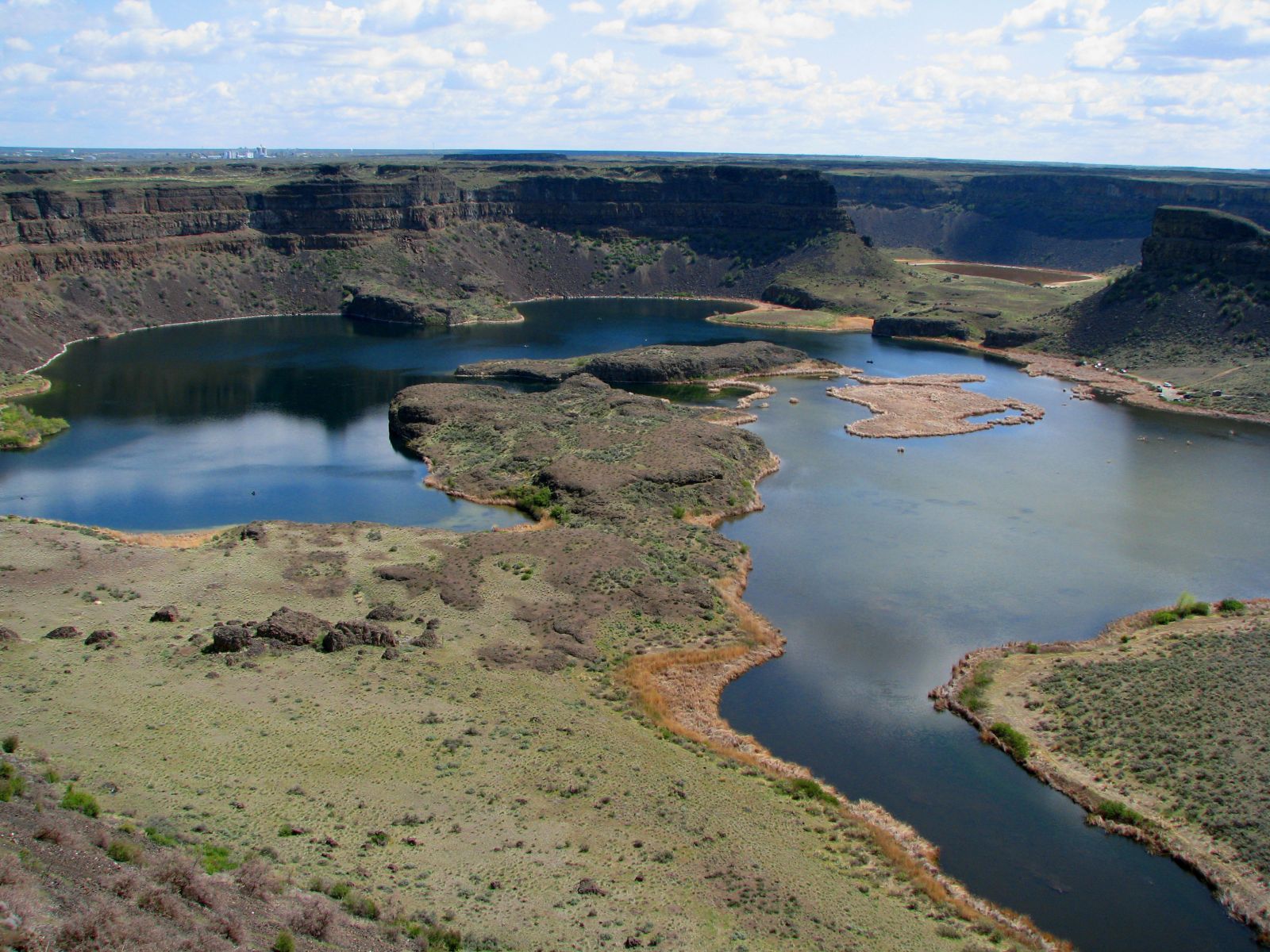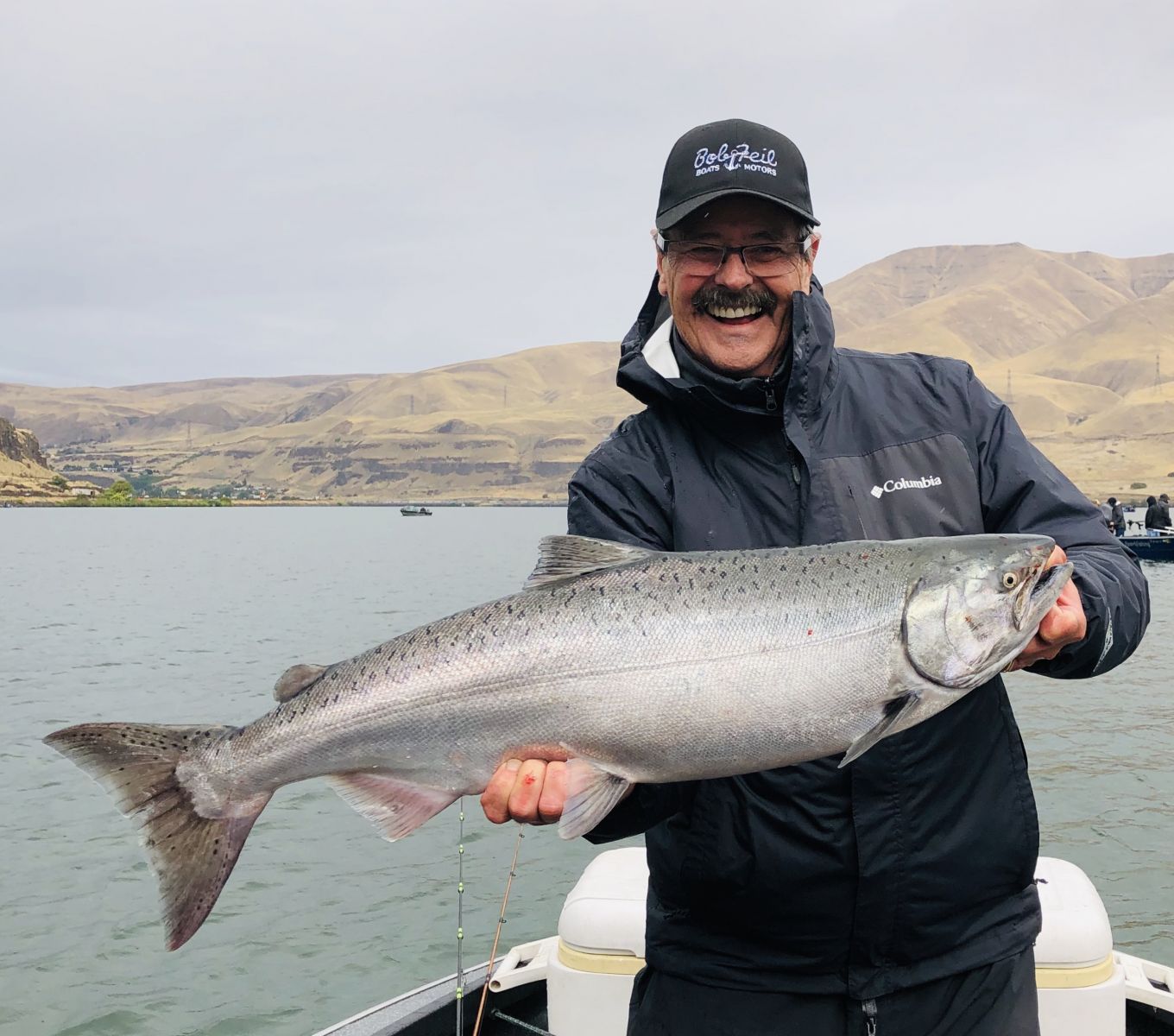.jpg)
I have always considered the March 1st opener of many of the lakes in Grant County as the unofficial opening of trout fishing in Eastern Washington. The crowds that show up in the Quincy Wildlife Area are an indication of how eager people are to get on with the season. Families from all over the state come for this early celebration of the chance to catch some trout.
The biggest number of anglers will be found at Burke and Quincy Lakes in the Quincy Wildlife Area. There are several that open in the area, but these two offer the most room to fish from shore. You can see anglers on both sides of Burke Lake, and in all manner of watercraft, take advantage of the boat launch here. Good fishing is available on Quincy Lake too.
I would estimate that 90% of those who fish these two lakes, and the others that open at the same time, are using the same method. They are casting some kind of bait from the shore, usually some flavor of Power Bait. Some will use a marshmallow and worm or egg. A float bait keeps it off the bottom where a passing trout can easily find it. The best way to present these baits is with a sliding sinker rig. To tie this rig, you slide an egg sinker on your main line, then tie on a swivel. Then add two or three feet of leader to your hook. The key to using this method is that when a trout bites, the angler can see it as the line slides through the sinker, and since the fish can’t feel the weight, it will swallow it and not spit it out. When you see that line twitch or go tight—set the hook!
Some other lakes visited by anglers in the Quincy Lake Wildlife Area on March 1st are Cup, Crystal, and Dot, which are reached via a trail. Also, very popular is Dusty Lake, which is a quality lake with selective fishing rules and is reached via a trail near Burke Lake. This is a selective gear lake with a limit of one fish of 18 inches.
A couple of other lakes that always get attention on March 1st are Martha and Caliche, which are near the town of George. Although Martha is a shallow, narrow lake, it always produces some of the biggest fish of the opener. It is to the east of George. To the west is Caliche Lake. Although the lake’s shore is surrounded by reeds, anglers will find spots to fish it all along the shore. Caliche typically doesn’t produce whoppers, but makes up for it with good numbers of trout that average about 11 inches.
Some quality lakes that have been drawing good numbers of anglers for the early spring opener are found north of Soap Lake. The first one is Lake Lenore. There are a couple of shore fishing areas on the north shore of the lake, some with good parking and even a vault toilet. The lake is inhabited with Lahontan cutthroat and has been known to produce some very large fish. Fly fishers most often outnumber the anglers that are casting hardware from the shore, but both methods produce fish. Fly fishers are typically casting chironomids under an indicator. There are a couple of areas on Lenore that are restricted to fishing to protect the spawning areas of the cutthroat, described in the Washington Sport Fishing pamphlet. Trout must be 18 inches long to be kept and the limit is one fish.
Not far up the road from Lenore is Dry Falls Lake. It is reached via the road that passes by the State Park at Park Lake. This has been one of the better prospects for fly fishing in the early season. The lake has experienced some ups and downs, but I believe it is currently on the upswing. All fishing is done from float tubes, pontoon boats or prams on Dry Falls, and it varies in depth from shallow flats to deep shale shorelines. Most often, anglers are casting chironomids to the shore under an indicator here. Anglers can encounter rainbow, brown and tiger trout in Dry Falls. Fish over 20 inches are no surprise. This is also a selective gear lake, with a size restriction of 18 inches and a one fish limit. This week’s photo is of Dry Lake, one of the most scenic of our high desert lakes.
The popular fly fishing lakes that open on March 1st are Lenice and Nunnally, with Lenice by far getting the lions share of anglers. There is a public access area not far up the road from Beverly. Here anglers must carry their float tubes and pontoon boats about a quarter mile to reach the lakes.
Once again the most often used technique is casting chironomids under an indicator. There are dozens of chironomid patterns tried on these lakes. I was able to get the two favorites from a friend, and he suggests a black Snow Cone in sizes 14 to 16 and a Guns and Roses in sizes 12 to 14. Both of these lakes have selective fishing rules with one fish of 18 inches allowed to be kept.
Last week, I was invited to participate in a Northern Pike Forum, hosted by the Upper Columbia United Tribes. I learned a lot about the extent of the migration of these predators into Lake Roosevelt, which pose a serious threat to our native species. To give you an idea of the attention being given to the effort to suppress their populations in Lake Roosevelt and other waters that feed the reservoir, there were over 100 participants in the Forum. There were many representatives from the tribes in the region, state and federal agencies were also present, even one from Alaska. Northern Pike were discovered in the Pend Oreille River in 2004 and in Lake Roosevelt in 2007. A huge amount of effort is being applied to this to hopefully keep these predators from entering the main stem Columbia River below Chief Joseph Dam. I mention all of this as we as anglers can really help. The Colville Tribe has a rewards program that offers anglers $10 for every Northern Pike caught. Last year the tribe paid a whopping $11,220 to anglers who turned in pike heads.
Best of luck on the opener. I hope to see you out there!

Dave Graybill
"The Outdoor Insider"
email: fishboynwi.net
or follow FishingMagician on Facebook
Get Currant Fishing Information at:
www.FishingMagician.com
Reports • Videos • Product Reviews
Free Quarterly E-Letter
© Copyright 2025 | All rights reserved | Privacy Policy
"We do not share any client data with third parties. Your personal information is kept confidential and is not disclosed to any outside organizations except as required by law or with your explicit consent."
